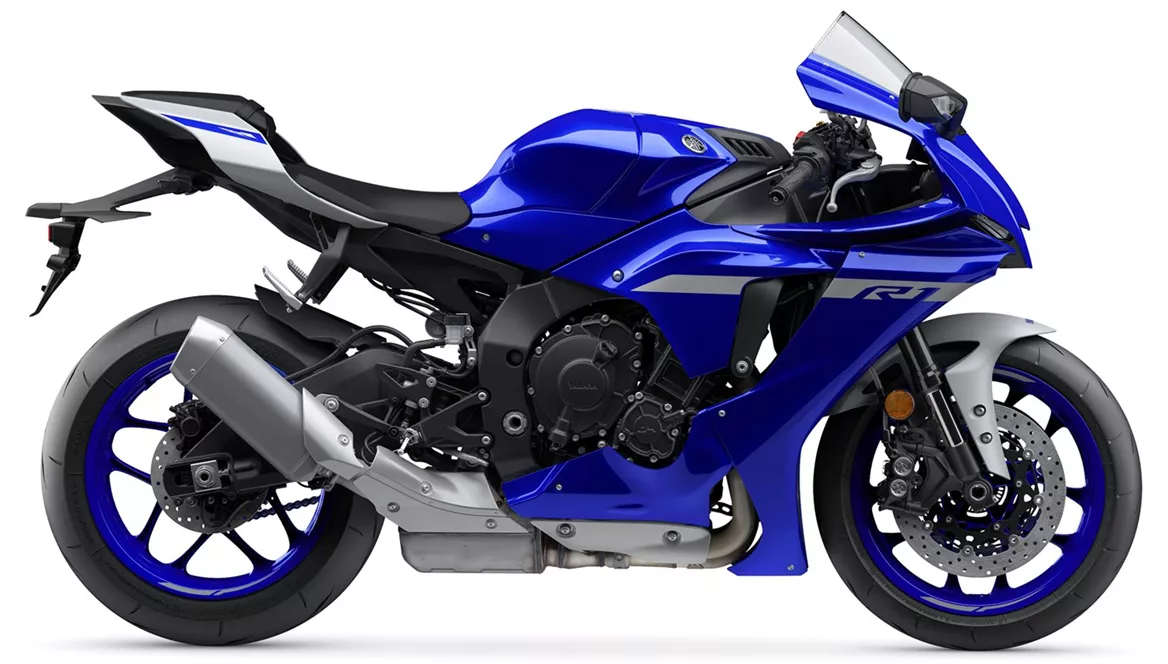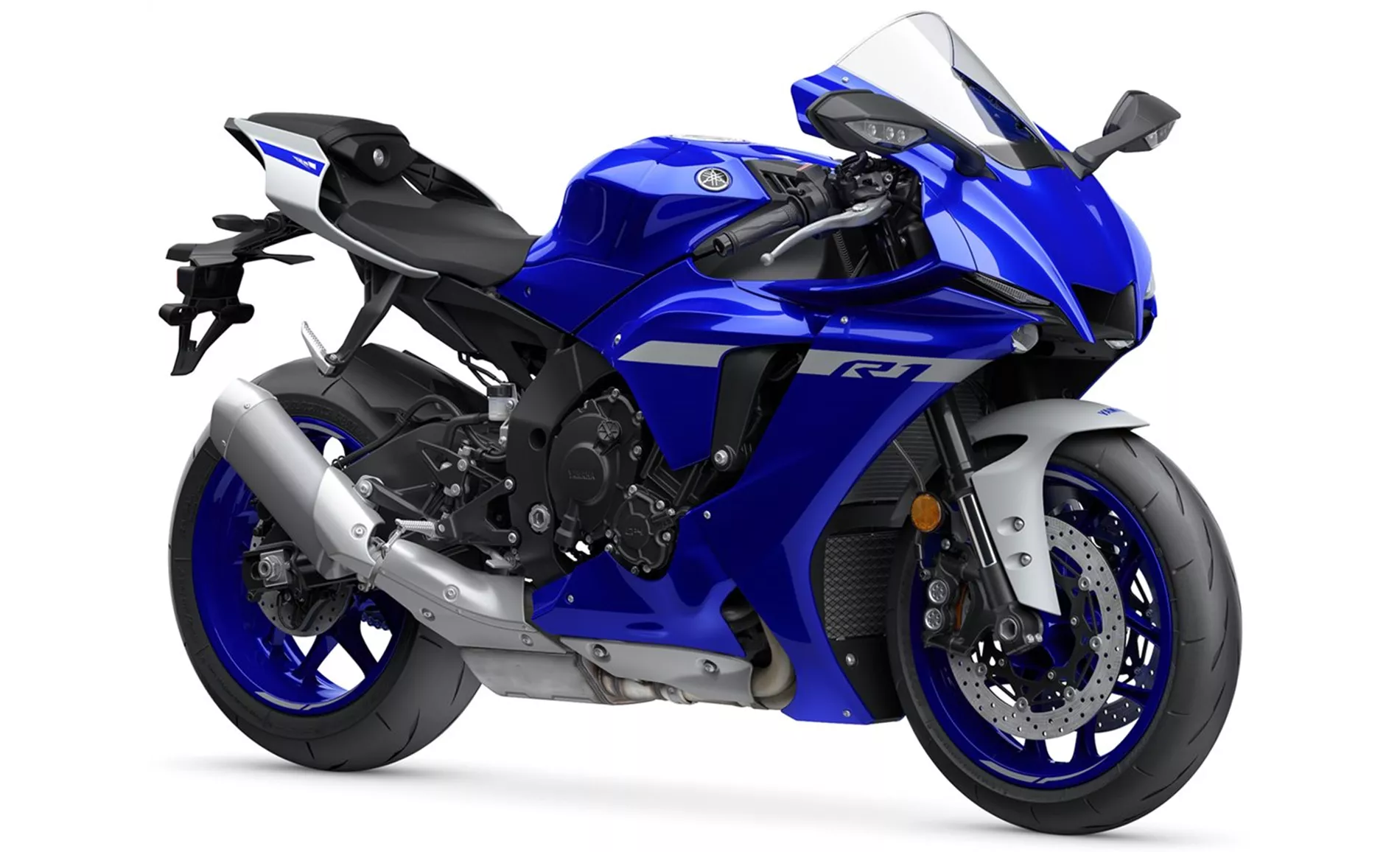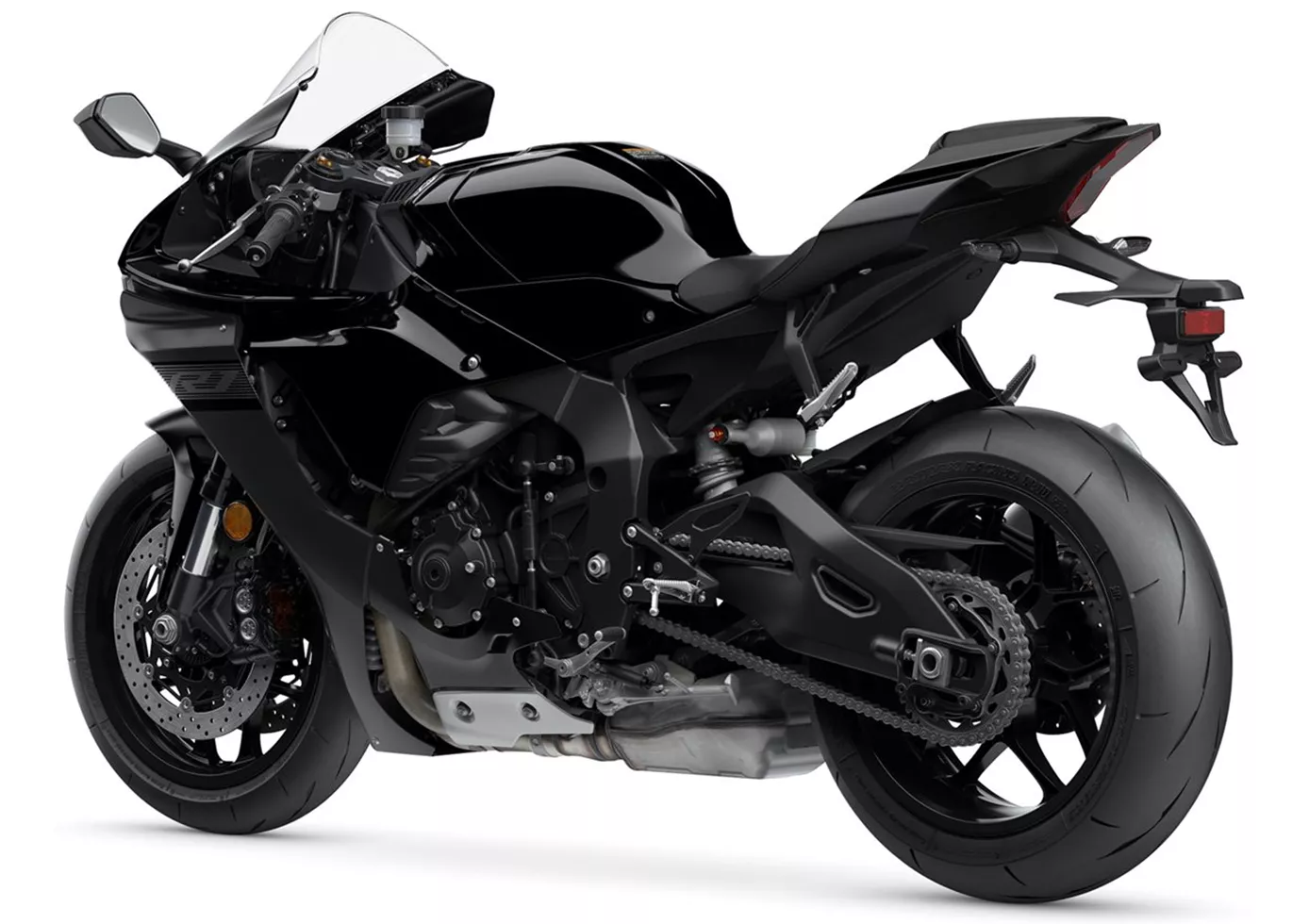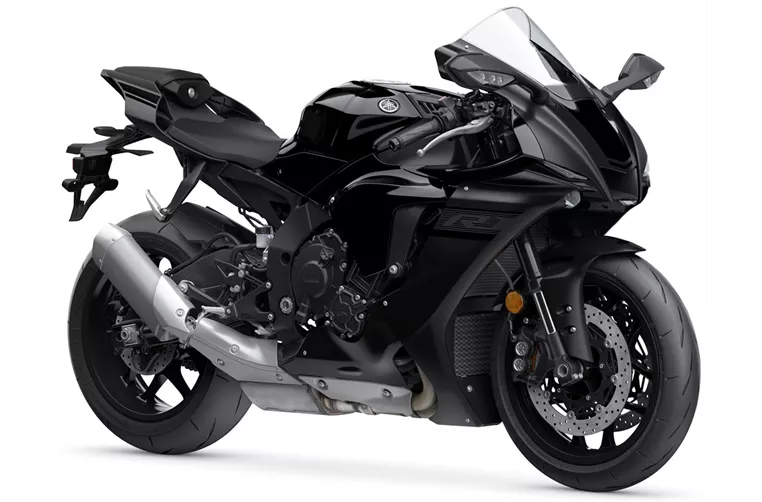Suzuki GSX-R 1000 2009 vs. Yamaha R1 2020

Suzuki GSX-R 1000 2009

Yamaha R1 2020
Vue d’ensemble - Suzuki GSX-R 1000 2009 vs Yamaha R1 2020
The Suzuki GSX-R 1000 model year 2009 and the Yamaha R1 model year 2020 are both powerful supersport motorcycles with impressive technical specifications. However, there are some notable differences between the two models.
In terms of engine and drive train, the Suzuki GSX-R 1000 2009 has a bore of 74.5 mm and a stroke of 57.3 mm, while the Yamaha R1 2020 has a larger bore of 79 mm and a shorter stroke of 50.9 mm. This difference in engine design contributes to the Yamaha R1's higher engine power of 200 HP compared to the Suzuki's 136 HP. The Yamaha R1 also has a slightly lower torque of 112.4 Nm compared to the Suzuki's 116.7 Nm. Both motorcycles have a compression ratio of around 13 and feature a 4-cylinder DOHC engine with a displacement of around 1000 cc.
In terms of chassis, both motorcycles feature an aluminum frame. However, the Suzuki GSX-R 1000 2009 has a twin-spar frame type, while the Yamaha R1 2020 has a Deltabox frame type. The Deltabox frame on the Yamaha R1 provides a stable and responsive chassis, contributing to its excellent handling and cornering capabilities.

Suzuki GSX-R 1000 2009
Both motorcycles have double disk brakes at the front, providing reliable stopping power. However, it is worth noting that the Yamaha R1's brakes may not be 100% satisfactory on the race track, which could be considered a weakness.
In terms of dimensions and weights, both motorcycles have the same front and rear tire width and diameter, as well as the same wheelbase. However, the Yamaha R1 has a slightly higher seat height of 855 mm compared to the Suzuki's 810 mm. Both motorcycles have a fuel tank capacity of around 17 liters.

Yamaha R1 2020
When it comes to strengths, the Suzuki GSX-R 1000 2009 offers improved geometry, a compact engine design, a relaxed seating position, a system with multiple height adjustments, and an anti-hopping clutch. On the other hand, the Yamaha R1 2020 boasts a powerful engine, clean response, great but not intrusive sound, a stable chassis, high-quality electronics, and a wonderfully noble overall impression.
In terms of weaknesses, the Suzuki GSX-R 1000 2009 has suboptimal accessibility of compression adjustment, is weak in the lower rev range, and is not recommended for beginners. The Yamaha R1 2020, on the other hand, may have brakes that are not completely satisfactory on the race track.
Overall, both the Suzuki GSX-R 1000 2009 and the Yamaha R1 2020 are high-performance supersport motorcycles with their own strengths and weaknesses. The Yamaha R1 offers a more powerful engine and a stable chassis, while the Suzuki GSX-R 1000 provides improved geometry and a relaxed seating position. Ultimately, the choice between the two models will depend on the rider's preferences and intended use of the motorcycle.
Caractéristiques techniques Suzuki GSX-R 1000 2009 par rapport à Yamaha R1 2020
Avantages et inconvénients en comparaison
Avantages et inconvénients en comparaison
Suzuki GSX-R 1000 2009

Malgré une conduite précise et équilibrée et un déploiement de puissance maîtrisé, la GSX-R 1000 reste réservée aux pilotes expérimentés. Suzuki sait qu'un millier doit rester un millier et s'y tient strictement. Espérons qu'elle pourra le faire encore longtemps.
Yamaha R1 2020

La Yamaha YZF-R1 est arrivée à maturité et fait le bonheur d'innombrables pilotes de circuit. Le moteur brille par sa légèreté et son agilité, la position de conduite surprend positivement et la maniabilité est radicale mais toujours "adaptée à la masse". La machine attire immédiatement l'attention par son aspect et aussi par sa sonorité qui fait chaud au cœur. C'est surtout sur les routes de campagne que la moto marque des points avec les atouts qu'on lui connaît : super moteur, super électronique, super ensemble ! Un vrai plaisir de conduire !
Comparaison des prix Prix moyen du marché Suzuki GSX-R 1000 vs Yamaha R1
There are a few key differences between a Suzuki GSX-R 1000 2009 and a Yamaha R1 2020. In terms of price, the actual average price of a Yamaha R1 2020 is about 161% higher. Compared to Yamaha R1 2020 there are less Suzuki GSX-R 1000 2009 bikes available on the 1000PS.de Marketplace, specifically 6 compared to 9. It takes less time to sell a Suzuki GSX-R 1000 with 64 days compared to 86 days for a Yamaha R1. Since model year 2005 1000PS.de editors have written 71 reviews for the Suzuki GSX-R 1000 and 80 reviews for the Yamaha R1 since model year 2005. The first review for the Suzuki GSX-R 1000 was published on 3/3/2004 and now has more than 7,100 views. This compares to more than 3,900 views for the first review on Yamaha R1 published on 4/28/2003.


















